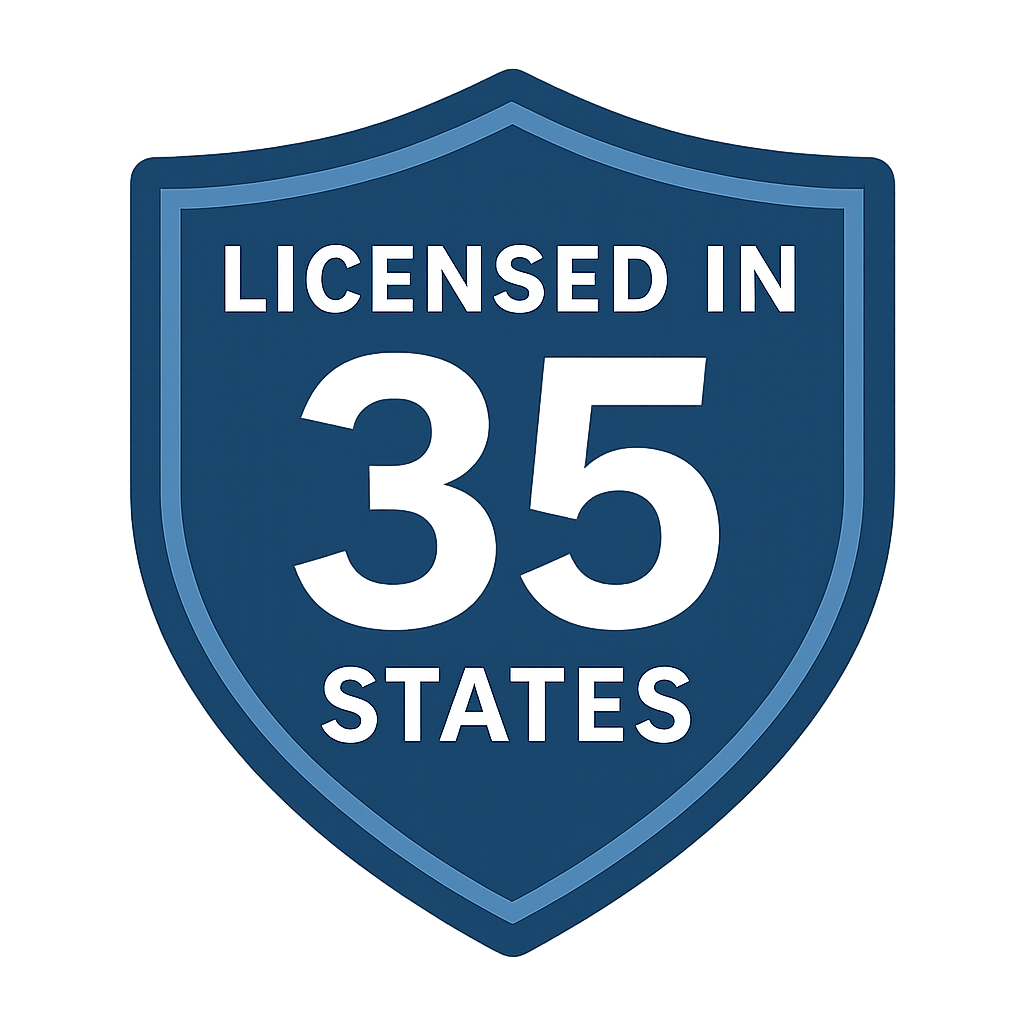What Is an Excluded Driver?
Understand the role of excluded drivers in auto insurance policies and how it impacts coverage.
On this page
Overview of Excluded Drivers in Auto Insurance
Definition of Excluded Driver
An excluded driver is someone explicitly listed on an auto policy as not covered to drive the insured vehicle. They have no coverage for accidents or claims. This lowers premiums for high-risk household members.
Reasons for Exclusion
Insurers exclude drivers with DUIs, poor records, or frequent claims to reduce risk. Common for teens or seniors in shared households. State laws dictate exclusion processes.
Impact on Coverage
Excluded drivers face no coverage for damages or liability if they drive. Policyholders may be liable for accidents. Review car insurance explained for clarity.
FAQs About Excluded Drivers
What is an excluded driver?
An excluded driver is listed on a policy as prohibited from driving the insured vehicle. They receive no coverage for accidents or claims. This reduces premiums for high-risk individuals.
Why would someone be excluded?
Drivers with DUIs, multiple tickets, or at-fault accidents are often excluded. Insurers limit risk from poor driving records. Teens or seniors may face exclusion in shared households.
How does exclusion affect premiums?
Excluding high-risk drivers lowers premiums by 10-25 percent. Savings depend on the driver's record and state regulations. Compare rates via auto insurance comparison.
Can an excluded driver still drive?
Excluded drivers may drive but lack coverage for accidents or damages. Policyholders risk liability for any incidents. States may impose fines for unauthorized driving.
How is a driver excluded?
Policyholders sign an exclusion form listing the driver with the insurer. Forms vary by state and carrier. Agents ensure compliance with DMV regulations.
What happens if an excluded driver crashes?
The policy offers no coverage for damages or liability. Policyholders may face out-of-pocket costs or lawsuits. Insurers may cancel policies for violations.
Does exclusion affect other drivers?
Other household drivers retain full coverage under the policy. Exclusions isolate high-risk individuals without impacting others. Verify via insurance providers.
Can excluded drivers get their own policy?
Excluded drivers can purchase non-owner or high-risk policies. SR-22 may be required for violations like DUI. Coverage ensures legal driving without affecting household rates.
Are exclusions permanent?
Exclusions can be removed if the driver's record improves. Insurers review after one to three years. Reinstated drivers may increase household premiums.
Do all states allow exclusions?
Most states permit driver exclusions, but regulations vary. Some require DMV notification for high-risk exclusions. Check state-specific rules for compliance.
Can teens be excluded?
Teens with violations like speeding tickets are often excluded to save costs. Parents sign exclusion forms to limit liability. Separate teen policies cover learner permits.
What about roommates?
Roommates with poor records can be excluded from household policies. They need separate coverage for personal vehicles. Non-owner policies suit those without cars.
Does exclusion apply to rentals?
Excluded drivers have no coverage for rental cars under the policy. They must purchase rental company insurance. Confirm terms via rental car coverage.
Can excluded drivers use other cars?
Excluded drivers lack coverage on any vehicle under the policy. Borrowing cars risks uninsured liability for owners. Separate policies ensure legal driving.
How to reinstate an excluded driver?
Submit a request to the insurer with an updated driving record. Approval depends on improved history or completed courses. Premiums may rise upon reinstatement.
Are exclusions reported to the DMV?
Some states require DMV notification for exclusions, especially for SR-22 cases. Insurers handle filings to ensure compliance. Check local regulations for specifics.
Does exclusion affect credit?
Exclusions don't directly impact credit scores. However, unpaid claims or cancellations may harm credit. Monitor scores via credit and insurance.
What if an excluded driver lives with me?
Household members must be listed or excluded to avoid coverage gaps. Insurers assume all residents have access unless excluded. Clear documentation prevents claim denials.
Can exclusions lower SR-22 costs?
Excluding high-risk drivers from SR-22 policies reduces household rates. Non-owner SR-22 covers the excluded driver separately. Savings vary by state and insurer.
Do exclusions impact claims?
Claims involving excluded drivers are denied under the policy. Policyholders may face personal liability for damages. Ensure exclusions are clearly communicated to avoid surprises.
Can excluded drivers be added later?
Drivers can be added after improving their record or completing courses. Insurers reassess risk and adjust premiums. Notify agents promptly for updates.
Do exclusions apply to motorcycles?
Exclusions extend to motorcycles under the same policy. Separate motorcycle policies cover excluded drivers. Review motorcycle insurance for options.
What if an excluded driver borrows my car?
No coverage applies if they cause an accident. Owners face liability for damages or injuries. Restrict access to prevent financial risks.
Are exclusions common for businesses?
Commercial policies may exclude employees with poor records. Business auto coverage requires clear driver lists. Check business insurance for details.
How to dispute an exclusion?
Appeal with evidence of improved driving or errors in records. State insurance departments mediate disputes. Contact agents for resolution steps.
Do exclusions affect non-owners policies?
Non-owner policies cover excluded drivers for borrowed vehicles. They meet state liability requirements independently. Ideal for those without personal cars.
Compare Auto Insurance with Excluded Drivers
Evaluate providers for policies accommodating excluded drivers and their impact on rates.
| Provider | Average Rate (Yearly) | Exclusion Policy | Best For |
|---|---|---|---|
| Geico | $1,200 | Flexible exclusions | Cost savings |
| Progressive | $1,300 | Easy form process | High-risk households |
| State Farm | $1,400 | Strict compliance | Local support |
Service Area
Understanding Excluded Drivers in Auto Insurance
An excluded driver is a household member or individual explicitly barred from driving a vehicle under an auto insurance policy, offering no coverage for accidents or claims they cause. Exclusions are common for high-risk drivers with DUIs, reckless driving, or multiple accidents, reducing premiums by 10-25 percent for households in states like California or Colorado. For example, excluding a teen with speeding tickets in a Denver household can lower rates significantly. If an excluded driver operates the vehicle, the policyholder faces full liability for damages or injuries, and insurers may cancel the policy. Explore car insurance explained for foundational knowledge.
Exclusions require a signed form submitted to the insurer, with some states like Texas mandating DMV notification for compliance. High-risk drivers, such as those needing SR-22 filings, can obtain non-owner policies to drive legally without affecting household rates. These policies, starting at $400 annually, cover liability for borrowed vehicles. Reinstating an excluded driver involves proving an improved record, potentially increasing premiums upon re-inclusion. Families with teens or seniors often use exclusions to manage costs while ensuring coverage for primary drivers. Check insurance providers for carrier options.
Commercial policies for businesses in states like Florida may exclude employees with poor records to limit liability. Non-owner policies suit excluded drivers without vehicles, such as urban renters or college students. Exclusions don't impact credit scores directly, but unpaid claims can harm financial standing. Policyholders must list or exclude all household members to avoid coverage denials during claims. In high-risk scenarios, like DUIs requiring SR-22, exclusions streamline costs while maintaining compliance. For tailored solutions, see SR-22 states for state-specific rules.
Motorcycle policies also allow exclusions, ensuring only approved riders are covered. Disputes over exclusions can be appealed with evidence of clean records or completed driving courses. Urban areas with high accident rates, like Los Angeles, see frequent exclusions to control premiums. Regular policy reviews prevent gaps, especially when household dynamics change. Excluded drivers borrowing cars risk significant financial exposure, so restricting access is critical. Contact us via company contact for expert guidance on managing exclusions.
Last Updated on by Shawn Christie




